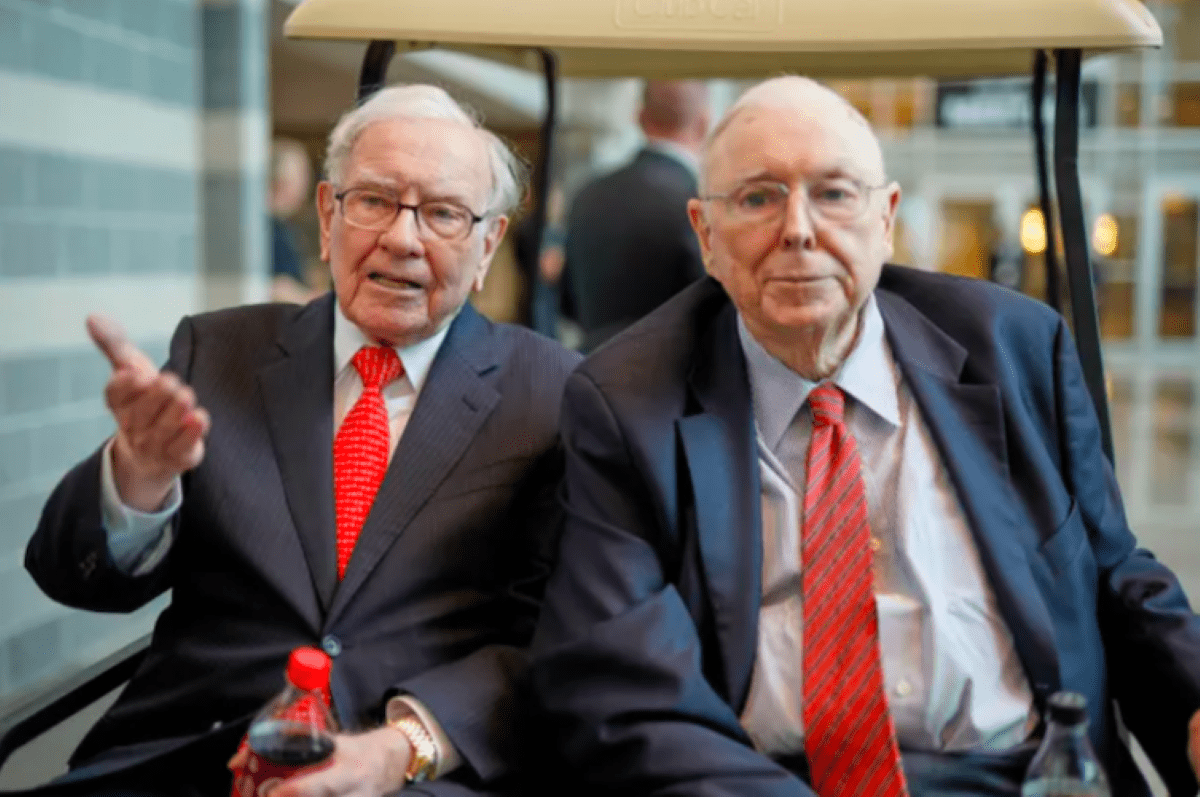Bitcoin is…


Bitcoin is “disgusting and contrary to the interests of civilization.” —Charlie Munger, vice-chairman of Berkshire Hathaway
When I was 17 years old, I bought shares of the Stop & Shop Supermarket Company (that grocery chain is now part of the Ahold Delhaize conglomerate). Being the kid I was, I held it only long enough to make the money I needed to buy the computer and the mountain bike I wanted. Stop & Shop wasn’t the only stock I considered. I remember ruling out Berkshire Hathaway because I didn’t have the $6,000-or-so to buy one single share. Maybe I should have split more wood or sold more lemonade and tried to make enough money to buy a share because I missed out on an opportunity. On May 1, 2021, Berkshire Hathaway held its annual meeting. At the time, a single share was trading above $400,000.
Despite that mistake, I still pay attention to the company’s annual shareholder meetings. In part, for the unfiltered commentary. This year did not disappoint. Regarding Bitcoin, Vice Chairman Charlie Munger expressed, “I don’t welcome a currency that’s so useful to kidnappers and extortionists.” Warren Buffet, CEO of the company, took a swing at the trading platform Robinhood. Buffet claimed that Robinhood has “become a very significant part of the casino group.” Munger swung harder, calling them “deeply wrong.”
In addition to the controversial comments, I also tune in for the investment advice. Buffet is often considered the most successful investor ever known. When he gives advice, you kinda oughta pay attention. Here is a transcript of the meeting for you to dig deeper into all of those pearls of wisdom.
Buffet, the world’s best investor, says the best way to invest is in index mutual funds. Upon his death, 90% of his then-widow’s funds will go into an S&P 500 index fund, and 10% will go into Treasury bills.
He pointed out that, if you looked at the 20 biggest stocks in 1989, none of them are on that list today. He said if we were asked in 1989 how many of those companies would still be the biggest today, very few, if any, of us would say zero. “It is a reminder of what extraordinary things are going to happen,” he said. “We were just as sure of ourselves as investors and Wall Street in 1989 as we are today. But the world can change in very, very dramatic ways … it’s a great argument for index funds.”
The best investor in the world wants you to buy index funds. Okay, Mr. Buffet. I will.
But which indexes? Large-cap? Small-cap? Growth? Value? The U.S.? International?
When Buffet advises investing in index funds, he primarily refers to the S&P 500 index. That’s a focus on large-cap U.S. stocks. Generally, over the long term, the S&P 500 is agnostic to the growth versus value debate. I consider a large-cap blend index, whether tied to the S&P 500 or the Dow Jones Industrial Average (aka the Dow), my home base. However, I am apparently more risk-averse than Buffet, as I tend to be more diversified than just holding the S&P 500 index.
I don’t rely upon a static allocation. I think it’s a mistake to hold something just because the textbooks say you should. The Vanguard Group is, in my opinion, the king of long-term investing in index funds. Vanguard tells us that “to get the full diversification benefits, we recommend that you consider investing about 40% of your stock allocation in international stocks and about 30% of your bond allocation in international bonds.”
I won’t refute the merits of Vanguard’s recommendations over the long run. But, for example, I’ve purposely avoided holding foreign-based stocks for years. On November 13, 2014, I sent our trading rationale to clients explaining why we shifted our allocation from the MSCI EAFE Index (Europe, Australia, and the Far East) to the S&P 500 index. (If you’d like to read that internal memo, send me an e-mail). I’ve dabbled in some emerging markets trades since then, but I’ve generally avoided international investments for those six-plus years. That was, technically, a risky move on my part because I became less diversified. I feel that sometimes it makes sense to avoid specific sectors, market capitalizations, or regions.
Similarly, sometimes I think it makes sense to discreetly allocate more funds to one area over another. For example, I’ve been more a fan of growth stocks than value stocks. On April 4, 2021, I shared with readers that “I shifted some large-cap growth broadly and technology stocks specifically into large-cap value stocks.” I am in no hurry, but I expect that I’ll rotate more of my holdings from growth into value over time.
I’ve covered many reasons I remain bullish on the U.S. equity market, even if a 10%+ correction is overdue. My bullish inclination remains although I have also pointed out some valuation metrics that contend that the U.S. stock market is approaching, if not in, bubble territory. The most elevated valuations exist within the growth sectors of the market, which could limit returns and leave equity prices vulnerable to more significant pullbacks. Because of those elevated valuations, I am exploring a shift from growth to value.
You may wonder why I have not made a more significant move. Well, when I sold out of the EAFE index in favor of the S&P 500 index, I did so because I thought it would be a long-term trade. I am not particularly eager to execute a trade unless we’re looking at holding something for at least a year, preferably a decade. If timed well, making a quick move from growth to value could pay off. However, I am by no means a savvy trader. According to Dalbar’s 2020 QAIB Report (Quantitative Analysis of Investor Behavior), trying to time the market was a primary culprit as to why the average equity fund investor returned nearly one-third less than the S&P 500 index over 3, 5, 10, and 20 years.
People like to tell themselves they’re the exception to the rule, that they’re special. I’m just smart enough to know that I’m not smart enough to be special. I don’t want to overconfidently try and time a short-term move. During the last month, I have become more confident that rotating from Growth stocks may make sense. Maybe not yet to Value stocks, but perhaps to something more neutral.
Regarding making a more considerable shift to Value stocks, as opposed to something more neutral, I’m sure I will do so at some point. I want to be more confident that it’s the start of a long-term phenomenon when I do. I don’t have to be first to be correct. I can let others take the risk of being early, and if it ends up being a long-term trend, then I can benefit from the duration of that trend.
The debate about Growth vs. Value is more subtle than you might expect. I don’t believe you should discuss the rotation of Growth to Value without considering Cyclical stocks vs. non-Cyclical stocks. Companies of cyclical stocks sell more of their goods and services when the economy is doing well. The prices of cyclical stocks tend to follow economic growth.
Non-cyclical companies sell non-durable necessities. Non-cyclical stocks tend to fall into the category of value stocks. Cyclicals, however, could be value companies, like financials, or growth companies, like technology. I like the outlook for cyclical stocks. If you think cyclical stocks will perform well, that means both value stocks (financial) and growth stocks (technology) could do well.
Cyclical stocks tend to outperform non-Cyclicals when the profit cycle accelerates. Earnings reports for the first quarter of 2021 have been overwhelmingly positive. Companies are beating on both the top and bottom lines, and some are increasing guidance. The Atlanta Fed GDPNow tool is currently tracking Gross Domestic Product growth for this quarter to be twice that of last quarter. I believe the positive economic and earnings outlook will support Cyclicals, which includes both Growth and Value stocks. I continue to have more of a pro-growth stance, but I know that it’s only temporary. The stock market tends to sniff out inflection points. Although the economic and earnings data are in boom territory, I need to watch them closely. It is near the time to flatten out my Growth allocation.
Starting in late March of 2020, the market saw its biggest gains from the “stay-at-home” stocks. Then the leadership became the more traditional post-recession, early-leadership type of names (lower-quality companies with higher leverage). We could soon see another leadership handoff so that mid-to-late cycle stocks (namely, the cyclicals with good cash flow and lower leverage) could be the next winners.
I don’t have a significant concern that the Growth stocks which led in the second half of 2020 will blow up in the second half of 2021. But a healthy rotation for the overall market means there would be a shift in leadership. Making my Growth vs. Value allocation more neutral isn’t about chasing performance; it’s about reducing risk by broadening diversification.
Allen Harris is the owner of Berkshire Money Management in Dalton, Mass., managing investments of more than $600 million. Unless specifically identified as original research or data-gathering, some or all of the data cited is attributable to third-party sources. Unless stated otherwise, any mention of specific securities or investments is for illustrative purposes only. Adviser’s clients may or may not hold the securities discussed in their portfolios. Adviser makes no representations that any of the securities discussed have been or will be profitable. Full disclosures. Direct inquiries: [email protected].
This column was first published in The Berkshire Edge on May 10, 2021.
Allen is the CEO and Chief Investment Officer at Berkshire Money Management and the author of Don’t Run Out of Money in Retirement: How to Increase Income, Reduce Taxes, and Keep More of What is Yours. Over the years, he has helped hundreds of families achieve their “why” in good times and bad.
As a Certified Exit Planning Advisor, Certified Value Builder, Certified Value Growth Advisor, and Certified Business Valuation Specialist, Allen guides business owners through the process of growing and selling or transferring their established companies. Allen writes about business strategy in the Berkshire Eagle and at 10001hours.com.








